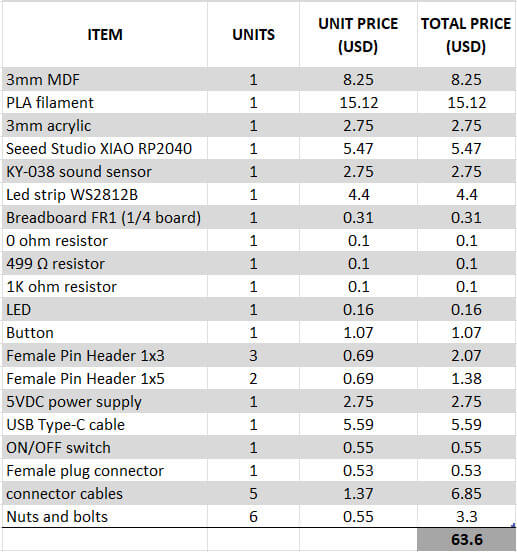In this section we list the activities to be solved in the following table:
| Checklist | Estatus |
|---|---|
| What will it do? | Finished |
| What has done what beforehand? | Finished |
| What will you design? | Finished |
| What materials and components will be used? | Finished |
| Where will they come from? | Finished |
| How much will they cost? | Finished |
| What parts and systems will be made? | Finished |
| What processes will be used? | Finished |
| What questions need to be answered? | Finished |
| How will it be evaluated? | Finished |
Propose a final project masterpiece that integrates the range of units covered. Your project should incorporate:
- 2D and 3D design
- Additive and subtractive fabrication processes
- Electronics design and production
- Embedded microcontroller interfacing and programming
- System integration and packaging
Your project must answer the following questions:
Once the lamp is energized, every time the sound sensor detects a signal (at the suggestion of my girl every time you blow on the sensor) it will activate the light change and the way in which this light is emitted; In addition, the images and decorations that are placed on the lamp can be interchanged.
Here is a list of projects based on lamps made in Fab Academy:

created with
Website Builder .